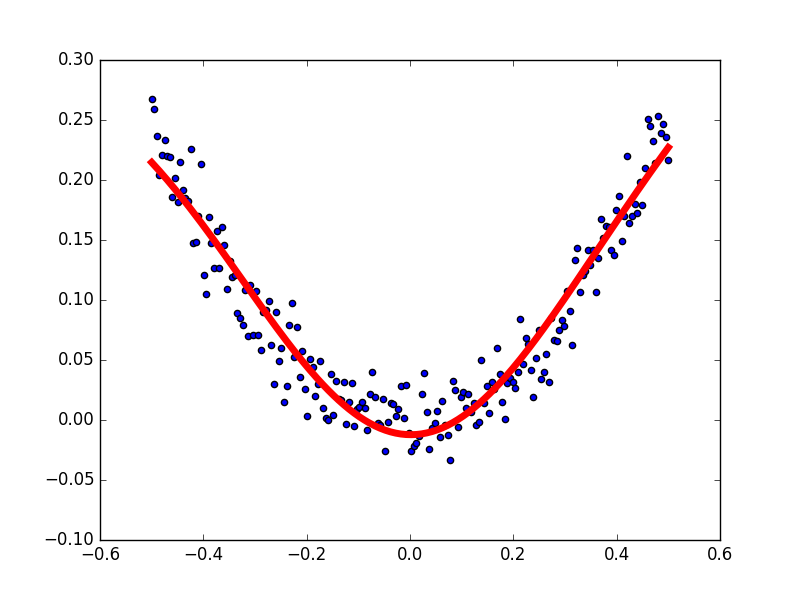简单线性回归
import os
import tensorflow as tf
import numpy as np
import matplotlib.pyplot as plt
os.environ['TF_CPP_MIN_LOG_LEVEL'] = '2'
# 生成-0.5到0.5 之间的200个点,一行一个样本,200行200个样本
x_data = np.linspace(-0.5, 0.5, 200)[:, np.newaxis]
# 生成噪点
noise = np.random.normal(0, 0.02, x_data.shape)
y_data = np.square(x_data) + noise
# 定义两个占位符,多行一列
x = tf.placeholder(tf.float32, [None, 1])
y = tf.placeholder(tf.float32, [None, 1])
# 神经网络中间层,1是输入神经元个数,10个中间层神经元
weights1 = tf.Variable(tf.random_normal([1, 10]))
biases1 = tf.Variable(tf.zeros([1, 10]))
wx_plus_b1 = tf.matmul(x, weights1) + biases1
# 激活函数 tanh双曲正切函数
# L1 是中间层的输出
L1 = tf.nn.tanh(wx_plus_b1)
# 输出层,中间层10个神经元,输出层1个
weights2 = tf.Variable(tf.random_normal([10, 1]))
biases2 = tf.Variable(tf.zeros([1, 1]))
wx_plus_b2 = tf.matmul(L1, weights2) + biases2
prediction = tf.nn.tanh(wx_plus_b2)
# 二次代价函数
loss = tf.reduce_mean(tf.square(y - prediction))
# 梯度下降法
train_step = tf.train.GradientDescentOptimizer(0.1).minimize(loss)
init = tf.global_variables_initializer()
with tf.Session() as sess:
sess.run(init)
writer = tf.summary.FileWriter('logs/', sess.graph)
for i in range(4000):
sess.run(train_step, feed_dict={x: x_data, y: y_data})
# 获得预测值
prediction_val = sess.run(prediction, feed_dict={x: x_data})
# 画图
plt.figure()
plt.scatter(x_data, y_data)
# 红色实线,线宽5
plt.plot(x_data, prediction_val, 'r-', lw=5)
plt.show()























 7281
7281

 被折叠的 条评论
为什么被折叠?
被折叠的 条评论
为什么被折叠?








